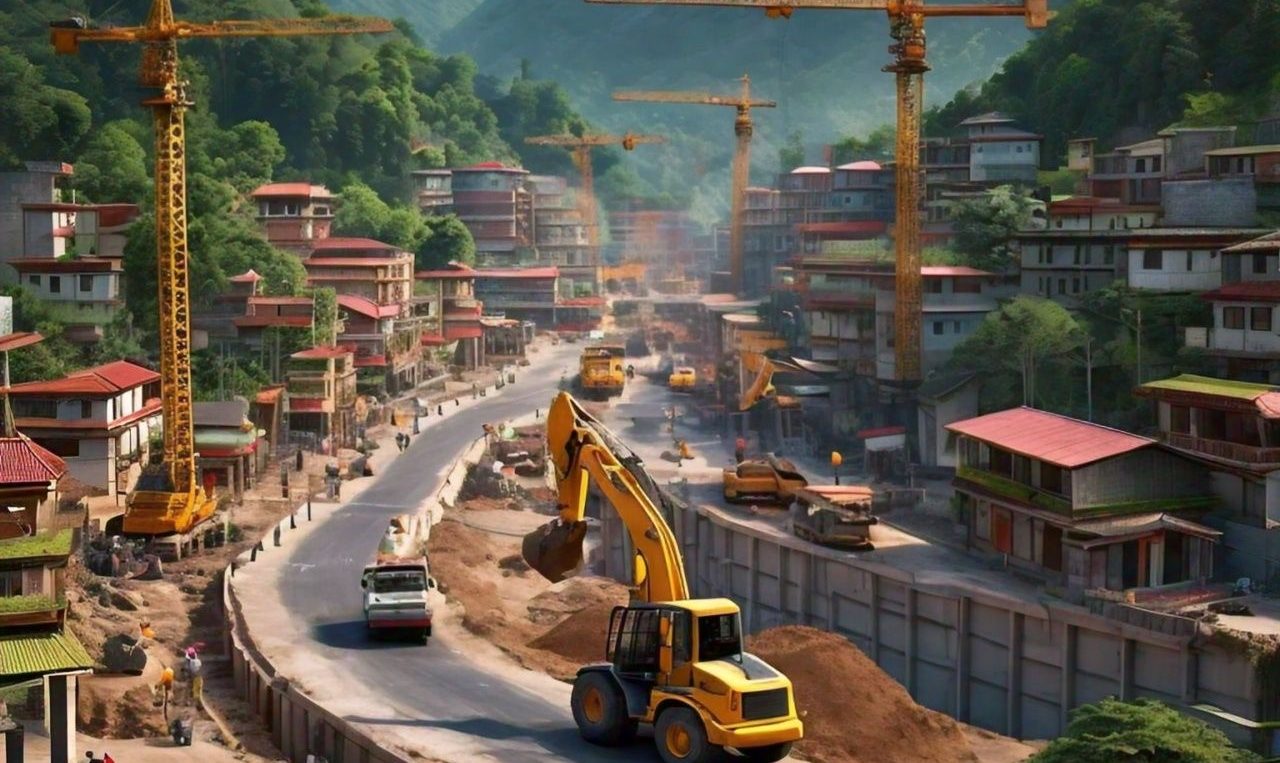Look at this ad which got published in the 2011 Black Friday edition of The New York Times, an audacious
full-page ad telling viewers not to buy their jacket.
Below the jacket’s image was a message detailing why customers shouldn’t buy the product. Among the
listed factors are the 36 gallons of water required to produce the jacket (enough to fill the daily needs of 45
people), the 20 pounds of carbon dioxide emitted (24 times the weight of the jacket), and the amount of
waste produced (two-thirds of its weight in waste). Though the ad wasn’t successful in its intended purpose,
it did raise awareness of an increasingly pressing problem. If you are a business leader the above ad either
made you laugh loud or shocked your wisdom. Either ways let me make you laugh louder or increase the
intensity of the shock. Following this ad Patagonia’s sales rose by 30%. .
Now allow me to share Patagonia’s revenue trend which might be of supreme interest to some,

The above sales was not achieved by selling more & more new garments, rather by manufacturing clothes which will last lifetime so that customer does not have to buy again & again. Although privately held Patagonia is now a billion dollar company and they did it by challenging Nobel prize winner economist Milton Friedman’s popular economic theory of 1970 which stated “ The social responsibility of business is to make profits”. Patagonia’s social responsibility and vision aligns beautifully though. From their earlier mission statement of “ Build the best product, cause no unnecessary harm, use business to inspire and implement solutions to the environmental crisis” Patagonia very rightly changed it to “ We’re in business to save our home planet”, the boastfulness and product centric mission statement was done away with. The CSR ( corporate social responsibility ) of Patagonia is therefore not to meet quarterly targets, generate high margins or trying to create the best quality clothes, their primary mission is to save the planet & so they decided to promote anti-consumerism or rather thoughtful consumerism. Patagonia makes money by staying true to the cause. In his own words, Patagonia founder Yvon Chouinard said,
“I know it sounds crazy, but every time I’ve made a decision that’s best for the planet, I’ve made money.”
How it all started
Yvon Chouinard — Patagonia’s founder — was an avid climber living the stereotypical hippie life out in Yosemite Valley. Feeling uneasy about the environmental repercussions of leaving traces on climbs, he began his entrepreneurial journey by creating reusable pitons — metal spikes to drive into cracks — as the ones on the market at the time were designed to be used once and left in place. In 1973, after the initial success selling climbing tools, Chouinard founded Patagonia to focus on the clothing business. The idea was to transfer the functionality aspect of climbing tools to the clothing industry by selling durable, quality products. Since 1985, Patagonia has pledged 1% of sales to the preservation and restoration of the natural environment. We’ve awarded over $89 million in cash and in-kind donations to domestic and international grassroots environmental groups making a difference in their local communities. In 2002, Yvon Chouinard, and Craig Mathews, owner of Blue Ribbon Flies, created a non-profit corporation to encourage other businesses to do the same. As they like to call it, “a self-imposed earth tax.” Patagonia’s idea for the best product rests on function, repairability, and, foremost, durability. Among the most direct ways that can limit ecological impacts is with goods that last for generations or can be recycled so the materials in them remain in use. So they provide free repairing of their clothes, encourage customers bot to buy too many of their products unless necessary, even run programs where customers can return their old clothes & avail discounts, sells & promotes buying of used clothes – all this & many more to make sure that they stay true to their mission. The passion on environment centric decisions are so high that Patagonia even went on & sued President Trump on his decision to slash the size of Bears Ears ( an expanse of red-rock canyons rich with archaeologically significant sites ) by 85%. The tribal groups and conservationists who had been monitoring the situation, including Patagonia, the decision realized some of their worst fears: that the Trump administration would be waging an assault on public lands, and potentially opening up protected areas to drilling and mining. In 2019, in an interview given to Forbes, Patagonia’s Corley Kenna, Director of Global Communications and Public Relations told that “ We always take the long view. We don’t look at things on a quarterly basis. Long-term thinking allows us to make smarter and more responsible decisions. We’ve found that when we put the planet first and do the right things for the planet, it winds up being good for business. It has proven itself over and over again. For example, when we decided to only use organic cotton, we didn’t have or know how to build an organic cotton supply chain. We had to really create a whole new one, but it was the right thing to do given the environmental harm caused by chemical conventional cotton”.
Now if all the above did not sound either inspiring or crazy, Patagonia released a statement this April 2021 that they will no longer add their brand logo on their apparel, the reason they said and I quote, “ What we’ve learned is that adding an additional non-removable logo reduces the lifespan of a garment, often by a lot, for trivial reasons. People change jobs, and the extra logo makes for an awkward re-gift. People tend not to pass logo’d gear down to their kids, and not everyone wants to be an advertisement on weekends, even if they’re proud to go into work on weekdays. The result? Perfectly good gear ends up forgotten in the closet—or worse, gets tossed in the trash “. Patagonia’s subtle gesture of giving without asking back has created a very strong & loyal circle of customer & employees who sees through & firmly support the organization’s purpose.
You cannot do it alone- The workforce
For a business model which sounds more like an environmental activism, you need a strong & well connected workforce. Sometimes the line between an employee & customer gets blurred out, customer roots for your success in the same way an employee does. The offices of Patagonia occupy a low-slung complex of stucco buildings in this sleepy beachside town in Southern California. There are solar panels and picnic tables in the parking lot, day care with a jungle gym by the main lobby and easy access to the beach, where employees surf during lunch break. It is a corporate Eden of sorts. Each opening at Patagonia receives 900 resumes allowing the company to hire slowly & filtering the right one in their cult group. Let us talk about some eye opening stats quickly here. Patagonia employs just over 2500 employees at present, enjoys only 4% annual attrition against retail & consumer product market average attrition rate of over 13%, 100% retention rate among working mothers, many people who work at Patagonia are passionate about spending time in the outdoors, as well as protecting it & the company offers employees the ability to do just that through the Environmental Internship Program. Employees from all parts of the company are allowed up to two months away from their regular roles to work for the environmental group of their choice while continuing to earn their pay check and benefits. Patagonia believes that when interns return from their 2 months off, they bring back stories, inspiration and a new commitment to their environmental mission. Now here is one more that breaks the sanity barrier ( Of some CEOs), although the company hires activist employees and encourages peaceful environmental protests. But for those wayward employees that get thrown in jail for their efforts, Patagonia will pay their bail (and their spouse’s bail), pay for their legal fees, and pay them for their corresponding time away from work. As Patagonia’s Chief Human Resources Officer, Dean Carter, told in a conference, “We want them to be who they are.”
If you are thinking about high paygrade for 4% attrition & employee loyalty, you are wrong. On the contrary if there is one complaint that employees at Patagonia has is that of low pay compared to market standard. As I said, 900 resumes for one opening, it is that difficult to get through, no cultural misfits are allowed, at least consciously. Patagonia’s employees feel that their company walks the talk & cultivates honesty & transparency. They feel they belong there as a home, they feel that they are part of a movement and bringing little changes through their effort & their company is acting like a motivator and sponsor.
Well as I know ( Not belief ) that it is easy to replicate a product, efficiency and process but almost impossible to replicate a culture & culture is what gives you a competitive edge in the long run. Patagonia is writing it’s own script & it’s disrupting traditional business model.
References









